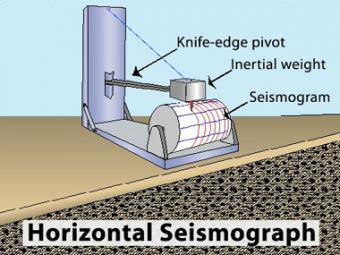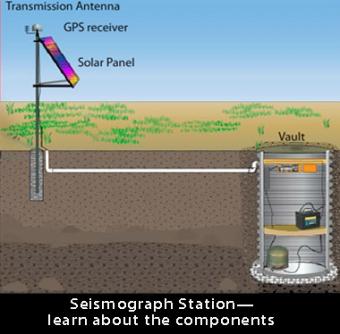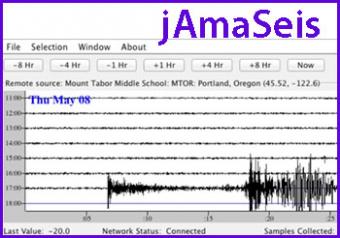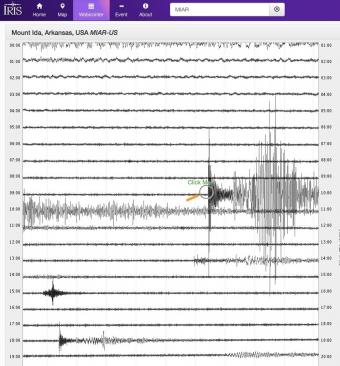Novice Spanish
A seismograph is a device for measuring the movement of the earth, and consists of a ground-motion detection sensor, called a seismometer, coupled with a recording system. This fact sheet provides an overview of the basic components of a seismometer and physical science principles behind its operation.
NOTE: Out of Stock; self-printing only.
Requesting Fact Sheets:
To request hardcopies of E&O materials, please send an email to: EandOproduct@iris.edu with the following information:
PLEASE NOTE: Time-sensitive requests must be sent at least three weeks before the date they are needed. When e-mailing a time-sensitive request, please write "Time-Sensitive Request" in the subject line.

Animation of the principles of a drum-style horizontal seismograph station that records back- and-forth (N-S, E-W) movement.

Animation of the principles of a drum-style vertical seismograph station that records up-and-down movement.

The "moment magnitude" scale has replaced the Richter scale for large earthquakes. Scientists have developed far-more sensitive seismometers that, with faster computers, have enabled them to record & interpret a broader spectrum of seismic signals than was possible in the 1930's, when the Richter magnitude was developed. Find out what scientists learn from seismograms.

This rollover shows all the parts to a typical USArray seismic station, and how it works. Push the "Watch an Earthquake" button to see how the energy goes from the ground through the station to a distant computer.

jAmaSeis is a free, java-based program that allows users to obtain and display seismic data in real-time from either a local instrument or from remote stations.

Explore earthquakes near you or from around the globe using the new IRIS Station Monitor app! Select from hundreds of seismic stations throughout the world. View up-to-the-minute recorded ground motions or see recordings from previous days and past events. Get information about recent events and choose to annotate wave arrivals.